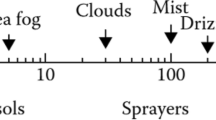Abstract
Objective: The aim of this study was to identify possible health effects caused by different cleaning agents used in graffiti removal. Methods: In 38 graffiti removers working 8-h shifts in the Stockholm underground system, the exposure to organic solvents was assessed by active air sampling, biological monitoring, and by interviews and a questionnaire. Health effects were registered, by physical examinations, porta7ble spirometers and self-administered questionnaires. The prevalence of symptoms was compared with 49 controls working at the underground depots, and with 177 population controls. Results: The 8-h time-weighted average exposures (TWA) were low, below 20% of the Swedish permissible exposure limit value (PEL) for all solvents. The short-term exposures occasionally exceeded the Swedish short-term exposure limit values (STEL), especially during work in poorly ventilated spaces, e.g. in elevators. The graffiti removers reported significantly higher prevalence of tiredness and upper airway symptoms compared with the depot controls, and significantly more tiredness, headaches and symptoms affecting airways, eyes and skin than the population controls. Among the graffiti removers, some of the symptoms increased during the working day. On a group basis, the lung function registrations showed normal values. However, seven workers displayed a clear reduction of peak expiratory flow (PEF) over the working shift. Conclusions: Though their average exposure to organic solvents was low, the graffiti removers reported significantly higher prevalence of unspecific symptoms such as fatigue and headache as well as irritative symptoms from the eyes and respiratory tract, compared with the controls. To prevent adverse health effects it is important to inform the workers about the health risks, and to restrict use of the most hazardous chemicals. Furthermore, it is important to develop good working practices and to encourage the use of personal protective equipment.
Similar content being viewed by others
Author information
Authors and Affiliations
Additional information
Received: 23 June 2000 / Accepted: 01 November 2000
Rights and permissions
About this article
Cite this article
Langworth, S., Anundi, H., Friis, L. et al. Acute health effects common during graffiti removal. Int Arch Occup Environ Health 74, 213–218 (2001). https://doi.org/10.1007/s004200000211
Issue Date:
DOI: https://doi.org/10.1007/s004200000211




